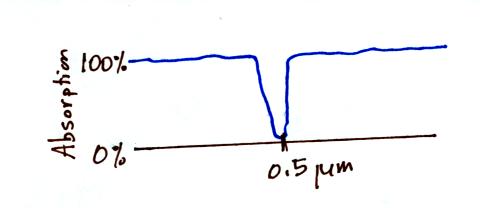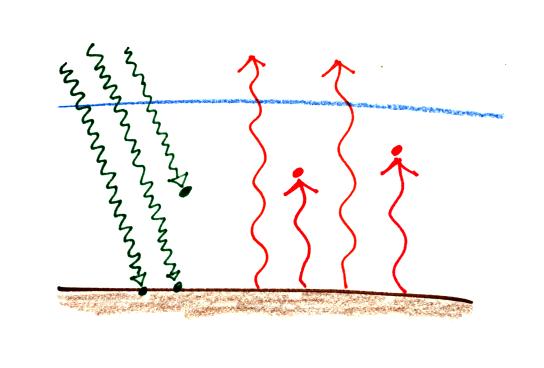

 |
 |
| 4. In the figure at right 3 units of sunlight arrive at the earth. 1 arrow of sunlight is absorbed in the atmosphere, the other 2 pass through the atmosphere and get absorbed by the ground. The ground emits 4 arrows of IR radiation. 2 arrows pass through the atmosphere and go into space and 2 are absorbed by greenhouse gases in the atmosphere. To be in energy balance the atmosphere must emit 1 arrow of IR radiation upward into space and 2 arrows of IR radiation downward toward the ground. |  |